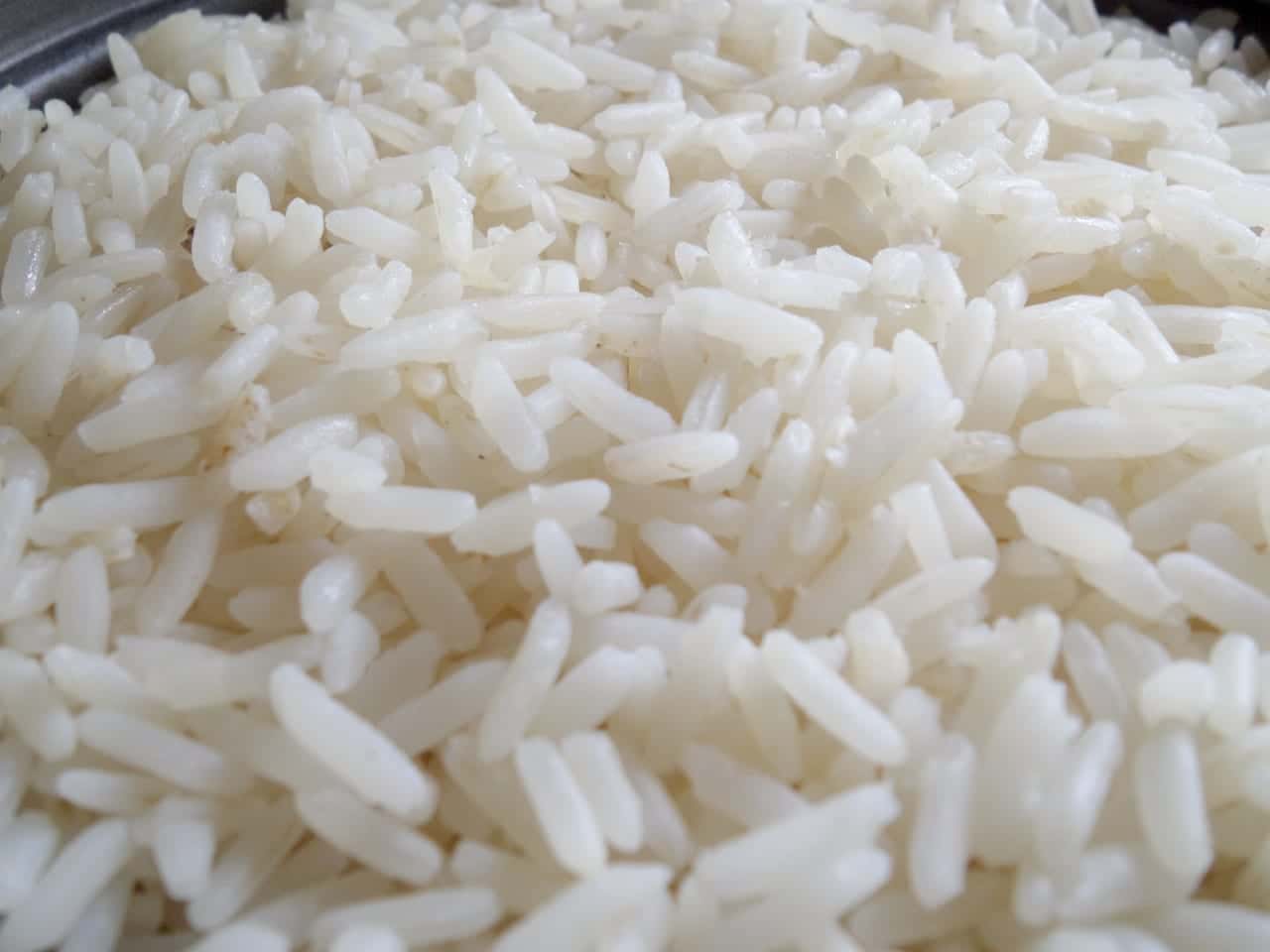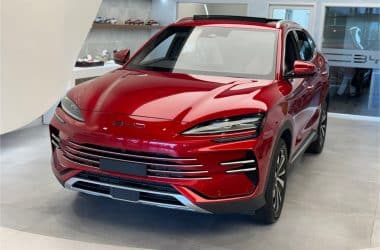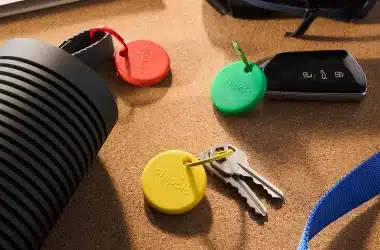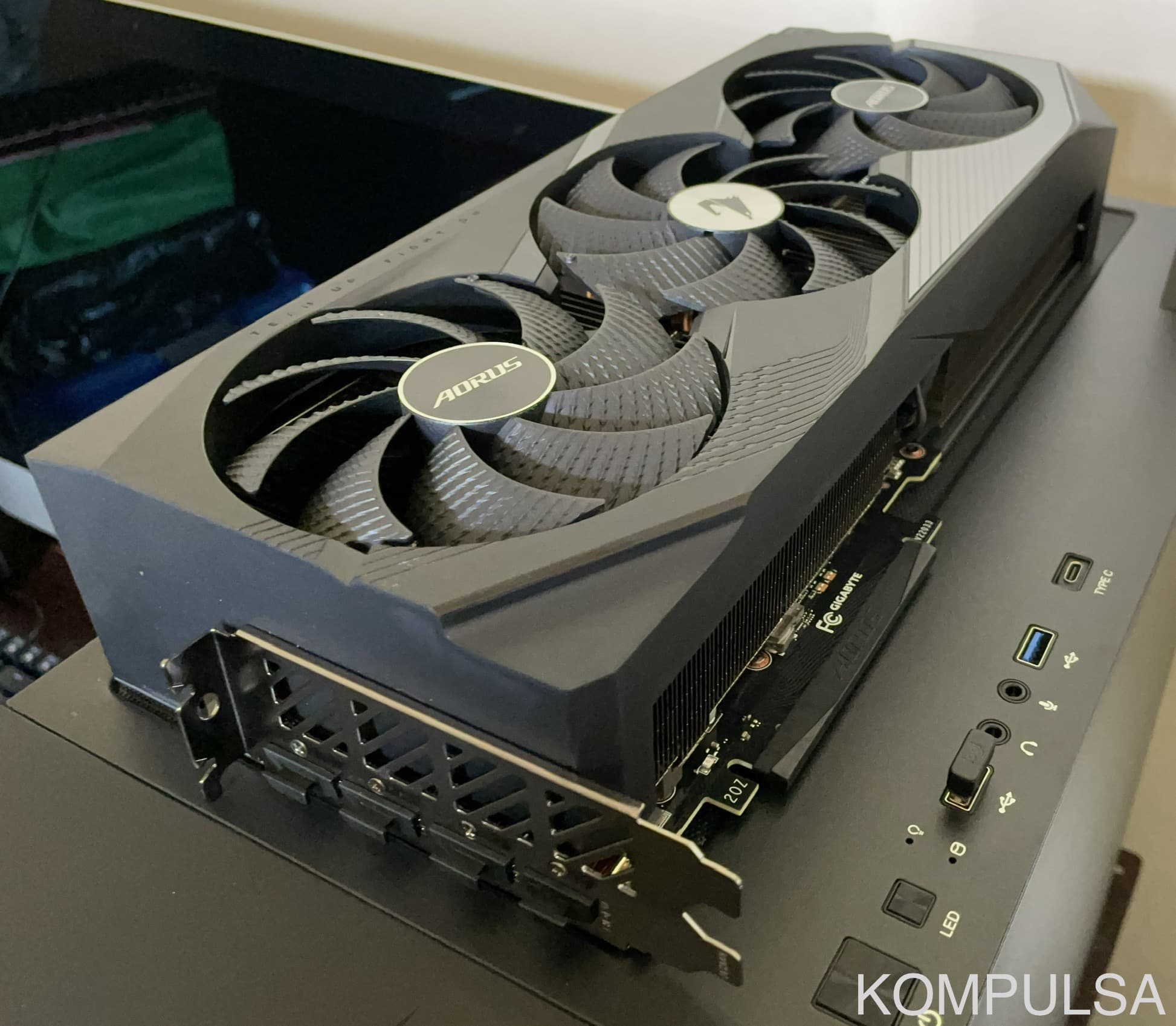Posted By Nicholas Brown.
On this page I will explain the power consumption patterns of various types of appliances, how to determine how much appliances consume in standby mode, and other little things that you should know. Appliances/devices are added to this page periodically.
Before you continue reading, you should read the power consumption unit explanations for a breakdown of the various energy units.
Appliance power consumption is determined equally by time, as it is determined by wattage (Time Operated In Hours * Watts = Power Consumption). If an appliance was 10,000 watts but you turned it on for only 1 second, the power consumption would only be 2.7 Wh (watt-hours), which is about as much as a flashlight consumes hourly (next to nothing). You can know that their importance is equal because power consumption = wattage x time used.
There are appliances that are a high wattage and are not operated long, such as toaster ovens, and most other appliances are of the type that are a low wattage and are operated for long periods of time. Air conditioners and heaters are the worst of both because they are a high wattage and they operated for a long time.
People often point to high wattage appliances such as toaster ovens, water heaters, and more and think that they account for most of the electric bill, but they don’t.
Basics (Toaster Oven Example)
Read this section of the Understanding Power Consumption page first
A toaster oven is usually 1,200 watts, but remember that is the hourly rate of electricity consumption. So it consumes 1,200 Wh after an hour. Due to the fact that it is operated only for a few minutes at a time, the consumption per use is not as much as you would expect. To determine the minutely consumption, divide 1,200 by 60 because there are 60 minutes in an hour.
The result is a power consumption rate of 20 watts for every minute that it is on. This means that it consumes 20 Wh for every minute that it is left on. If the oven was on for 5 minutes, then multiply 20 by 5 and the result is a total power consumption of 100 Wh per use. If your electricity rate is $0.10 USD/kWh then the cost of that is $0.10. 100 Wh = 0.1 kWh. I calculated the cost by multiplying the 0.1 kWh by the 0.10 per kWh electricity rate.
Toaster ovens are operated a few times per day, and there are an average of 30 days in each month. If your oven is operated 4 times per day, then it would cost $0.024 USD per day which totals $0.72 USD per month.
Appliances usually have their power consumption in watts printed on the back of them, but it actually varies in many cases due to the fact that people change settings, such as air conditioner or heater thermostat temperature, monitor brightness, and more.
Computers also have a variety of settings that can affect power consumption, including a performance mode (this uses the most electricity), balanced mode (this tries to balance energy-efficiency while still offering decent performance), and a power saving mode (or ‘eco’ mode) which is a low performance mode that saves the most electricity.
Unfortunately, there are many appliances of which the power consumption cannot be determined by simply checking their labels, including but not limited to the following.
You can measure the power consumption of appliances using a power strip with an integrated meter, like the P4430.
Power Consumption Of Air Conditioners
Household air conditioners are one of the few types of appliances that, by themselves, can have a significant impact on your electric bill (17% of it if you are in the United States).
Calculate using Kompulsa’s energy use calculator (web page), or get the Android app for offline use.
The average 24,000 BTU household air conditioner in the U.S. consumes 1,800 kWh of electricity annually. That translates to 150 kWh per month. [Source]. That costs $198 USD per year at the national average electricity rate of $0.11 per kWh, or $16.50 per month.
Note: There are 4 months of winter in the United States, therefore, if you live in a tropical country, the calculations above won’t be relevant to you. Also bear in mind that this is the cost per room, not per household.
Air conditioners do have a rated power consumption, but it is their maximum, and that is not usually what they are consuming most of the time. If you are using an under-powered unit such as a 5,000 BTU one, which is too small to cool your large room, then it is likely to operate on the highest setting and stay on all day. Buying an undersized unit won’t save electricity, it will just stay on longer as it struggles to cool the room.
The power consumption printed on the label is correct, but it applies only while the unit is on. A properly selected unit will switch itself off when the room reaches your desired temperature. If, for example, you have a 24,000 BTU unit and it is on only half of the time. Its (usually) 2,400 watt power consumption rating will actually work out to be half that (1,200 watts), assuming it is operating at full capacity (the highest setting, in this case).
You can figure out how much power your air conditioner is using by determining the percentage of the day the unit is running, then multiply that decimal percentage figure (in this case 0.5) by the unit’s power consumption rating, so the result would be 1,200 Wh (1.2 kWh). Multiply the 1.2 kWh by your utility company’s electricity rate to determine how much the unit costs per day, and multiply that by 30 to determine (roughly) how much it costs per month.
If you’d like to find the most efficient air conditioners on the market, you can use our air conditioner finder, which sorts units by efficiency. The most efficient units will be displayed at the top of the search results, along with their estimated monthly power consumption, monthly energy cost, prices, EER, and more. You can also filter you search results by unit type (split, window unit, PTAC, etc).
People often utilize 9,000, 12,000 and 24,000 BTU units that increase or decrease the speed of their compressors as the weather gets hotter or cooler respectively. These are called inverter units.
The non-inverter units operate at the same speed all the time (excluding fan speeds), and when the room reaches the desired temperature, they shut off until it becomes too warm again, then they turn themselves back on to cool the room back off.
Want to lower or eliminate your electric bill? Solar power is a great way to do it. Kompulsa’s comprehensive guide to going solar explains how it works, as well as the advantages, disadvantages, and various tips.
Many modern air conditioners are of the inverter type. This means that a device called an inverter controls the speed of the air conditioner’s compressor based on the thermostat temperature that you, the user set it to.
The compressor is what mechanically powers the process that actually cools the air. Inverter air conditioners facilitate real-time temperature control, meaning you can adjust the temperature of the unit almost immediately. However, it still takes a little time for the temperature of the room to change (a few minutes).
Manufacturers have stated that their inverter air conditioners may consume up to 50% to 60% less energy than those without inverters. Considering the exceptionally high power consumption of air conditioners, inverter units may be worth the extra money in some cases.
If you turn the temperature on the thermostat up, the compressor turns down because you are basically telling it that you don’t need it to cool as much, and the result is that it consumes less power because the compressor has less work to do. The more work it has to do, the more energy it will require to do that work. You can find power consumption data for each air conditioner size and more on the air conditioner power consumption page.
NB: The energy usage of air conditioners may be determined mostly by usage, however, remote-controlled A/C units do consume power when they’re switched off. This isn’t much, though. The combined energy efficiency ratio takes this into account.
Further Reading
DOE – Average Annual Power Consumption of Air Conditioners (start at page 7-21)
Power Consumption Of Heaters
Space heaters/room heaters/central heating systems can have either multiple temperature settings such as low, medium, or high, or you can set the thermostat to the exact temperature that you want. The more you turn up the thermostat temperature, the more heat the heater has to generate to achieve that temperature.
Household space heater power consumption ratings generally range from 500 watts to 1,500 watts. By itself, the nameplate wattage rating is not very useful, as heaters are not always running.
Here is a page dedicated to heater power consumption. It provides power consumption data by heater size, type, and energy source.
Power Consumption Of Clothes Dryers
240 volt, vent-free units: Average clothes dryer power consumption ranges from 500 kWh to 900 kWh annually. That costs $55 to $99 annually at the national average U.S electricity price of $0.11 per kWh. [Source]
Power Consumption Of Lighting
An analysis of recessed lighting, and the power consumption of household lighting, and how to reduce the cost of that can be found here.
Power Consumption Of Leaf Blowers
The power consumption of leaf blowers is dependent on the model, as some are more efficient than others. The wattage of the model sampled (Worx WG516 400 CFM) is 470 Watts on the low setting, and 731 Watts on the high setting.
The cumulative power consumption of these appliances, on the other hand is heavily dependent on usage. The two questions you’ll need to ask yourself are:
- What setting are you using?
- How long will it be on?
- How many times per month will you use it?
For our example, we will use the following made-up variables. This does not necessarily reflect average usage patterns, this example only serves the purpose of demonstrating a calculation.
- High – This means it will draw 731 Watts when it’s on.
- 15 minutes. Divide 731 by 8 to determine how many Wh (Watt-hours) of energy it will consume after 15 minutes of usage, since 15 minutes is one-quarter of an hour. The result is 182.75 Wh. This is also the wattage per use for this example, which is also useful.
- 8 (Every Saturday and Sunday) times per month (once per day). Multiply this by the power consumption per use: 8 * 182.75 = 1,462 Wh (1.462 kWh)/month.
Multiply the 1.462 kWh by your electricity rate: ($0.12/kWh is the U.S. national average) 1.462 * 0.12 = $0.1754. Sometimes the big appliances don’t consume as much as you think!
Power Consumption Of Water Heaters
Water heater power consumption varies significantly with the type of heater used. Tankless water heaters do use less energy, but they may cost more. Most tank water heaters draw 5000-6000 watts when they’re on, and only need to operate for 15-30 minutes at a time. This means that their power consumption ranges from 1.5 kWh ($0.18 USD) to 3 kWh ($0.36 USD) per use.
If four people live in your house, the cost of water heater operation would start at $0.72 USD to $1.44 per day (depending on the heater). It would be double that if everyone showers twice daily.
Typical tank water heaters may be equipped with a setting that gives you some control over how quickly you heat your water, but unfortunately the heater is not most efficient at the highest setting, so it is up to you to decide whether you want your water heated quickly, or if you are willing to wait longer and save money as well as electricity.
Keep in mind that water heaters don’t need to operate as long at the higher setting, so their power consumption would normally be the same no matter what if it wasn’t for the issue mentioned above. Remember what I emphasized at the top of this page about the fact that wattage and time used are equally important.
Power Consumption Of Electric Kettles
The power consumption of electric kettles varies by type, for example: Insulated kettles may consume less energy because they lose less of their heat to the ambient air. A traditional kettle has to generate additional heat to compensate for what is lost, and that increases power consumption.
For now, i’ll just provide the results of a simple power consumption test I performed on a new electric kettle. Bear in mind that this is only one model, so it doesn’t necessarily apply to other kettles.
| Kettle Type | Conventional, glass jar |
| Model | Hamilton Beach K39 |
| Average Current Drawn During Test | 10.9 Amps |
| Cycle Time (How Long It Was On) | 8 Minutes |
| Capacity | 1.7L |
| % Filled | 100% |
| Ambient Temperature | 29 °C |
| Insulation | None |
| Cumulative Power Consumption Per Cycle | 0.15 kWh |
| Cost Per Use (Assuming An Elect. Rate of $0.12/kWh) | $0.018 |
| Monthly Energy Cost: | $1.08 (9 kWh) |
The energy cost per month was calculated with the assumption that the kettle is used twice per day for 30 days, assuming all of the variables above.
Power Consumption Of Electric Cookers/Hot Pots
The power consumption of electric cookers can vary significantly, as some are insulated. An electric cooker can be a convenient solution for people who need to cook while they’re busy, but as always: The power consumption matters. For this section, i’ll just include test results for an electric cooker I metered, pending the acquisition of more test data to provide you with an average.
| Cooker Type | Conventional, plastic |
| Insulation | None |
| Brand | Elite Cuisine |
| Cycle Time (How Long It Was On) | 5 Minutes |
| Capacity | 32 oz |
| % Filled | 100% (with water) |
| Setting | Medium |
| Cumulative Power Consumption Per Use | 0.06 kWh |
| Cost Per Use (Assuming An Elect. Rate of $0.12/kWh) | $0.0072 |
| Monthly Energy Cost (assuming 4 uses per day): | $0.864 (7.2 kWh) |
I would highly recommend purchasing an insulated cooker to reduce power consumption, and keep your food warm longer.
Rice Cooker Power Consumption
The power consumption of rice cookers per use is largely determined by the amount of rice being cooked, as well as the capacity of the cooker. Larger rice cookers require more power, and larger amounts of rice require more power as well.
It’s also worth noting that some rice cookers are insulated, and therefore consume less power due to reduced heat losses.

Freshly cooked rice in a 3-cup rice cooker.
I haven’t yet filled my appliance database with rice cooker power consumption data. However, I metered the power consumption of an off-the-shelf cooker and the results are in the following table.
| Rice Cooker Type | Conventional, steel |
| Insulation | None |
| Brand | Black And Decker: Model RC3303 |
| Cycle Time (How Long It Was On) | 35 Minutes |
| Capacity | 1.5 Cups Dry/3 Cups Cooked |
| % Filled | 66%/1 cup (of dry parboiled rice) |
| ‘Keep Warm’ Mode Wattage: | ~25.8 Watts |
| Cumulative Power Consumption Per Use | 0.10 kWh |
| Cost Per Use (Assuming An Elect. Rate of $0.12/kWh) | $0.012 |
This cooker was not operated in ‘keep warm’ mode during the 35 minute period. The power consumption in ‘keep warm’ mode was measured separately, and was not counted towards the 0.10 kWh cumulative power consumption figure.
Power Consumption Of Refrigerators
The average household refrigerator consumes 400 kWh to a little under 600 kWh annually (this applies to modern units that are less than a decade old, older models can consume far more than that). This translates to a cost of (respectively) $44 USD to $66 annually at the U.S. national average electricity rate, or $3.66 to $5.50 per month.
Refrigerator Power Consumption: Deciphering The Label is a comprehensive guide providing power consumption information on a variety of refrigerators, ordered by size, and distinguished by type.
Refrigerators cool themselves by removing heat from the cabin (where you put your food) and when they are cool enough, they shut themselves off to save energy.
The wattage of your refrigerator alone does not tell you the overall power consumption, and it is actually nowhere near what it actually consumes. You would need an energy use monitor to determine the cumulative power consumption by plugging the refrigerator in it and leave it for at least a week. Preferably a month. Multiply the result by four.
You cannot obtain an accurate average refrigerator power consumption figure after metering it for only a day, because sometimes it does not cycle off for most of the day. Some refrigerators operate all day (which is not necessarily normal), and operate for a much shorter time period the next day.
Refrigerator Power Consumption Ratings: Modern refrigerator power consumption (according to the DOE) ranges from 400 to 600 kWh annually for the average kitchen unit in the 20 cubic-foot capacity range (the 25 cubic-foot models are in the 500 kWh/year range).
The larger the refrigerator is, the more power it will consume (compared to models from its time).
Power Consumption Of Washing Machines
The rule that the wattage printed on appliances is not adequate information applies to washing machines too. Washing machines consume widely varying amounts of power from less than 20 watts, to more than 500 depending on what it is doing.
It is filling that requires less than 20 watts, washing requires a few hundred watts on average because it has to rotate a large heavy barrel full of clothes and soap water, rinsing does as well, this applies to spinning as well because it literally has to spin a large heavy barrel full of clothes and soap water. More power is required to move heavier items.
The only way to determine the actual energy usage of your washing machine is to leave it plugged into an energy use meter for at least a week. A day alone will yield an inaccurate result because people sometimes wash their clothes at random times, and load sizes also vary.
The meter will tell you the cumulative power consumption in kWh after that week, then you multiply that by 4. If you have people come over to do laundry less frequently than weekly, then leave the machine plugged into a meter for a month.
Power Consumption Of TVs
Models Tested (Power consumption figures are averaged):
Samsung 32″ LED HD TV (4003 Series): 25 Watts.
JVC LT-43EM75 43″ LED HD TV (2015 model): 29 Watts.
Power Consumption Of Speakers And Amplifiers
First: Speakers draw electric current from amplifiers, and then amplifiers draw electric current from your power outlet in turn to facilitate that.
The electricity usage of your speakers is absolutely nowhere near what is printed on the label. This is because their power consumption is almost fully determined by two things:
The volume that you set the speaker system to, and the amount of bass in the song that you listen to because bass frequencies require more power to produce than the rest of the higher frequencies (yes, I verified this with an energy use meter, the power consumption spiked every time bass lines were played).
Volume affects power consumption so much that electricity usage can double if you turn the volume up considerably. This is just for the sake of knowing, though. Speaker systems are for your enjoyment, they aren’t meant to fulfill a practical purpose, so please comfortably listen to them at whichever volume you like.
Don’t worry about how much they are using when you turn up the volume, because they actually use very little power.
Manufacturers grossly exaggerate the power of their speakers (this cannot exceed the power consumption, by the way, so please look at the power consumption printed on the back label, and you can be sure you won’t get anywhere that much power out of your stereo, due to the ‘law of conservation of energy’, which is a law of physics you should know about).
A very tiny amount of power is required to produce big sound.
Two Examples Of Exaggeration
- JVC ‘520 watt’ bookshelf stereo system. The average power consumption at half volume was 52 watts (i’m not saying this is the same as the power output, i’m just showing that 520 exceeds the 52 watts, and the actual power output of it cannot exceed the power input). 520 watts is a peak rating which you can’t actually get from it. Most stereos have this unrealistic label on them, and it is in bold to get your attention. It is a highly successful gimmick. The power consumption printed on the back is 245 watts, but, that is the maximum, and at volumes which you shouldn’t listen to it at.
- Klip Extreme 40 watt speaker system. The average power consumption is 13 watts, and, due to other physics laws, the power I get out of it has to be less than the power consumption rating.
Power Consumption Of Laptop Computers
The power consumption of a laptop computer varies significantly with size (especially screen size). The power consumption of standard laptop PCs, which are 15-18 inches, and run Windows averages 10-20 watts, tiny ones with low-power processors may consume less than 10 watts. As is the case with all computers, a laptop’s power consumption may increase during heavy CPU usage (for example: some video games can easily double power consumption).
Power Consumption Of Laptop Chargers
Laptop chargers power laptops and their batteries simultaneously. Laptop chargers typically draw 30-70 watts when charging batteries, and this figure tapers off when the battery’s state-of-charge nears 100%.
Power Consumption Of MacBook Pro (2010 13″ model)
When charging (at 0% State-Of-Charge) with the MacBook Pro on: 72 Watts.
When charging with the MacBook Pro off: 60 Watts.
MacBook Pro power consumption when fully charged (computer on): 13 Watts (average).
Power Consumption Of Desktop Computers
Desktop computers vary dramatically in size, specifications, and power consumption. A desktop computer could use 16 CPU cores, or only two. The average home desktop PC power consumption averages 30-160 watts. Power consumption varies significantly with CPU load. This means that CPU intensive apps such as video games and video software can easily double power consumption.
Power Consumption Of Wireless Routers
The power consumption of wireless (Wi-Fi, to be specific) routers is in the 2-5 Watt range. 2 Watts for routers without modems, and 5 Watts for routers with modems. Power consumption varies with model and usage.
Power Consumption Of Fans
Personal desk fans and standing fans ranging from 16 to 18 inches in blade diameter consume 50 to 100 watts. 16″ fans typically draw 50-70 watts (50 watts at the lowest setting, and over 60 watts at the highest setting), and the energy usage of 18″ fans may draw up to 100 watts.
Want to lower your electric bill? Solar power is a great way to do it.
Power Consumption Of Light Bulbs By Type
All figures assume that the bulbs are used 6 hours per day, 30 days per month. All figures are monthly, the currency is USD, and an electricity rate of $0.12/kWh is assumed.
Power Consumption of Incandescent Light Bulbs
People often use incandescent light bulbs ranging from 40 watts to 100 watts for the average room. However, smaller 25 watt bulbs are used in smaller rooms.
- 40 watt incandescent bulb: 7.2 kWh, which would cost $0.86.
- 60 watt incandescent bulb: 10.80kWh, which would cost $1.29.
- 100 watt incandescent bulb: 18 kWh, which would cost $2.16.
Power Consumption Of Fluorescent Light Bulbs/Compact Fluorescent Lamps (CFL bulbs)
The wattage of household fluorescent light bulbs (for room lighting) ranges from 13 to 40 watts (some are more than 40, but that would be overkill).
- 15 watt CFL bulb: 2.7 kWh, which would cost $0.32 (brightness equivalent to 60 watt incandescent bulb).
- 23 watt CFL bulb: 4.1 kWh, which would cost $0.4960 (brightness equivalent to 100-120 watt incandescent bulb).
- 40 watt CFL bulb: 7.2 kWh, which would cost $0.86.
- 65 watt CFL bulb: 11.7 kWh, which would cost $1.40.
Power Consumption Of LED Light Bulbs
The wattage of household LED light bulbs is in the range of 4 to 20 watts.
- 4 watt LED bulb: 0.72 kWh, which would cost $0.08 (400 lumens or 40 Watt equivalent – this number is rising, as LEDs are improving rapidly).
- 8 watt LED bulb: 1.44 kWh, which would cost $0.17 (800 lumens or 80 Watt equivalent).
- 20 watt LED bulb: 3.6 kWh, which would cost $0.43 (2000 lumens or 200 Watt equivalent).






Do you have any idea how much power a 200 W Sony bookshelf speaker would use when nothing is even playing through them? Also, how would this compare to a separate kenwood amplifier? My roommate is trying to tell me that I need to turn off my speakers and he doesn’t because my speakers use way more electricity when nothing is playing. I’m incredibly skeptical to believe this, but can you give some insight? Thanks.
Hi Steven.
Fortunately, your bookshelf speaker will not consume anywhere near 200 watts unless you max everything out. You would have to turn the volume all the way up, enable all bass-boosting features, among other things. I learned this when I ran a series of tests on my stereos. I would highly recommend purchasing an energy use monitor such as a Kill-A-Watt, or another from companies such as GE, etc to settle this once and for all. You will also be able to determine which appliances are costing you the most.
Thanks for reading!
I have a problem in my physics homework that says How much current does a 10,000 Watt stereo system draw when at full volume. This problem confused me because I feel like we should have more information. Can you help?
Hi Zack,
Wattage = voltage x current. Current is measured in amperes (amps, often abbreviated to A). The voltage is the power outlet’s voltage. If it is a 120-volt outlet, you would calculate the current by dividing 10,000 by 120. The result would be 83.3 amps. Feel free to comment again if you need further assistance or clarification.
Thank you for reading!
Hi Nick. From the info above, it is safe to say that a refrigerator is much more energy-consuming than washing machines, right? So that having a fridge is much more costly (when it comes to paying the bills) than when you only have washing machine?thanks
Hi Gladys,
Yes. A typical family-sized washing machine will draw roughly 600 watts, while a 25 cubic-foot refrigerator draws only 200, but the refrigerator will operate for many hours per day (12+ hours, or even 24 hours on an extremely hot day). Thus, the refrigerator will consume more power (unless you’re using a mini-fridge).
Thank you for commenting!
Okay, thanks a lot for your response!
So a 5 or 6 cu ft fridge will just be fine, right? We use the washing machine for like twice a week only (for the clothes of only 2 people)..and we’re buying a new fridge to replace the one that broke down. We want to save on cost such that the energy consumption of the fridge will just be almost equal to the washing machine’s. Is that even possible? Thank you.
You’re welcome!
Yes. It’s possible using the small refrigerator you mentioned. They consume very little (I would advise against buying thermoelectric refrigerators, as they are inefficient).
Vapour compression refrigerators, which are the most efficient can usually be identified by a compressor. The compressor may resemble a rounded black pot with copper tubing attached to it.
Great! Thank you very much, that was very helpful! I’ll try to look into the compressor for what you said.
Right now, I only base the energy efficiency with the EEF rating placed on the model. The one I checked has a rating of 287 which doesn’t really make much sense to me. I only know that the higher that is, the more energy-efficient. And I also checked the wattage required which says, 0.65w …I’m not really sure but looks okay to me.
Did you mean ‘EER’ rating?